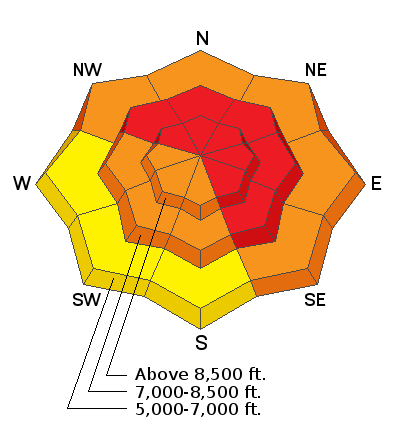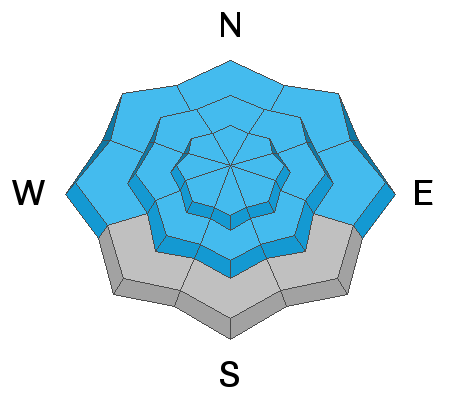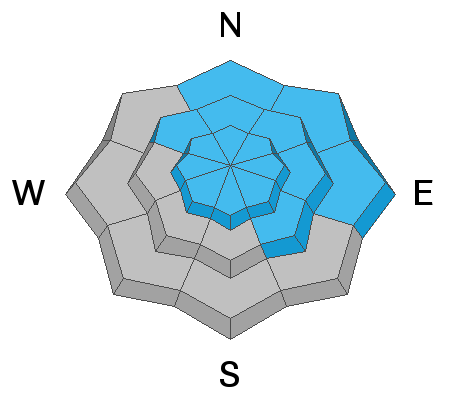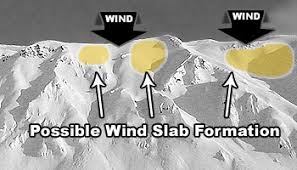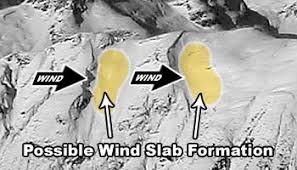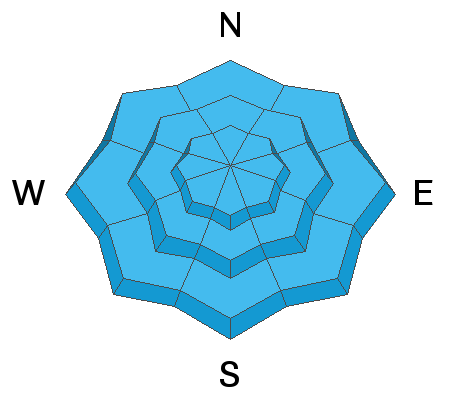We've completed the report on last Saturday's tragic avalanche in the backcountry in Mill Creek Canyon above Salt Lake City that killed four skiers.
Final Accident Report
The UAC in Logan is offering a Youth BC 101 avalanche class for youth aged 16-20 on Feb 21. For more info and to register, click
HEREA dangerous avalanche situation exists this holiday weekend in the backcountry, with very dangerous avalanche conditions and lots of nice powder to lure people into steep avalanche terrain. Snow is falling in the Logan Zone again this morning, and plenty will fall today, overnight, and tomorrow, with 2 to 3 feet expected to accumulate on upper elevation slopes by Wednesday morning. It's currently 16°F and there is 66 inches of total snow at the 8400' Tony Grove Snotel. Southwest winds are increasing a bit this morning and blowing around 22 mph with 40 mph gusts at the 9700' CSI Logan Peak weather station.
Strong westerly winds last week drifted tremendous quantities of snow into lee slope avalanche starting zones and cross-loaded drifts in exposed terrain lower down. Thick drifts and hard wind slabs exist in wind deposition areas, while the snow is still super shallow and very weak in more sheltered and scoured areas. With widespread layers of preexisting very weak snow, the recent significant increase in load on the fragile snowpack has created very dangerous avalanche conditions on drifted slopes in the backcountry.
It's snowing at a decent rate this morning and more snow is expected today in the mountains, with 8" to a foot of accumulation possible by this evening. High temperatures at 8500' will be around 21°F, with fairly strong southwest winds, and wind chill values will be as low as -8°F. Snow, heavy at times will continue tonight, tomorrow and tomorrow night, with 2 to 3 feet accumulating on upper elevation slopes by Wednesday morning. Expect HIGH avalanche danger in the backcountry, perhaps rising to EXTREME!
Yesterday, through a brief break in the clouds I could see some fresh natural avalanches in the large east facing avalanche paths in the Wellsville Mountain Wilderness above the towns of Mendon and Wellsville. Much of the avalanche terrain the rest of the zone was obscurred from view by clouds, but more natural activity likely occured.
Saturday (2-13-2021), a party of local backcountry skiers remotely triggered a large avalanche in "the Gut" of White Pine Knob above the yurt in the popular Bunch Grass Canyon. The 4' deep and about 500' wide avalanche occurred on a southeast facing slope at around 8900' in elevation. The slope angle at the crown was in the lower 30° range, but the slope rolls to 40 degrees in the Gut itself, and the hard slab was well connected, pulling out even on the lower angled slope above and on each side of the steep section.
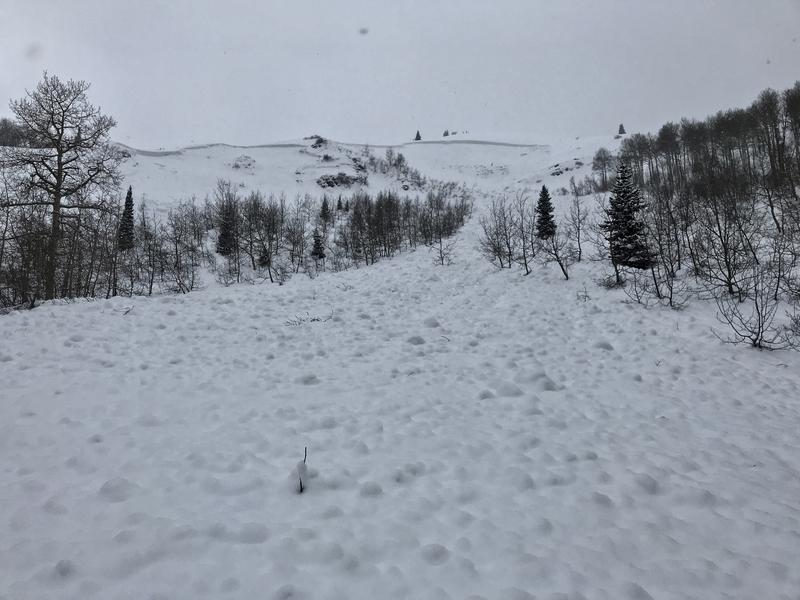
Thursday (2-11-2021), riders remotely triggered a large hard slab avalanche on a pretty low angled slope in the Peter Sinks Area (an area that is not well known for avalanches). The avalanche on an east facing slope at around 8300' in elevation was around 100 feet wide and 2 to 7 feet deep, and it stacked large chunks and piles of debris into the trees below. It was the third such hard slab avalanche to occur this week on a fairly low angled slope (between 30 and 35 degrees) and in a rather unexpected place. All have been in the eastern part of the Bear River Range...

